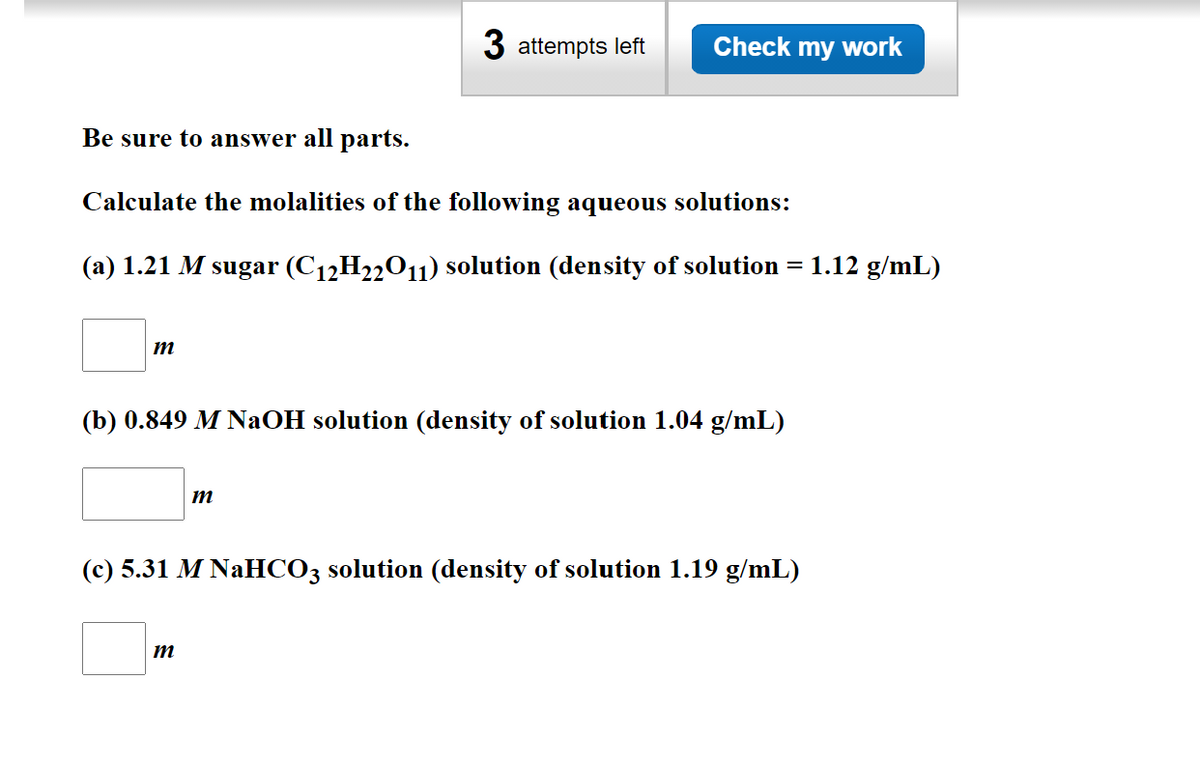Calculate the molalities of the following aqueous solutions: (a) 1.21 M sugar (C12H22011) solution (density of solution = 1.12 g/mL) (b) 0.849 M NaOH solution (density of solution 1.04 g/mL) (c) 5.31 M NaHCO3 solution (density of solution 1.19 g/mL)
How do I solve this?

Molality = no. of moles of solute/Mass of solvent (kg)
Now, we have to calculate 'no. of moles of solute' & mass of solvent using given data.
(a) Given data = 1.21 M sugar solution having density is equals to 1.12 g/mL.
Now, let us assume that we have 1 L (1000 mL) of solution, then the no. of moles of sugar would be = 1.21
| Because, Molarity = no. of moles of solute / volume of solution (L) |
Mass of solution = density * volume = 1.12 g/mL * 1000 mL = 1120 g
Now, mass of solute = no. of moles of solute * molar mass of solute = 1.21 mol * 342 g/mol = 413.82 g
Mass of solvent = mass of solution - mass of solute = 1120 g - 413.82 g = 706.18 g
Molality = no. of moles of solute / mass of solvent (kg) = (1.21 mol * 1000) / 706.18 g = 1.713 m (Approx.)
Trending now
This is a popular solution!
Step by step
Solved in 3 steps









